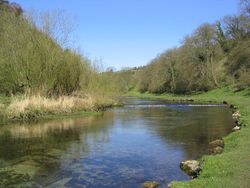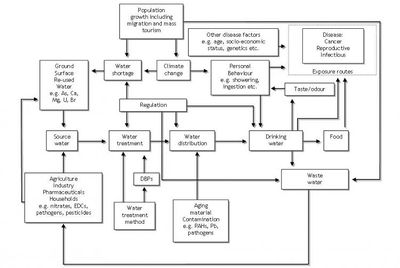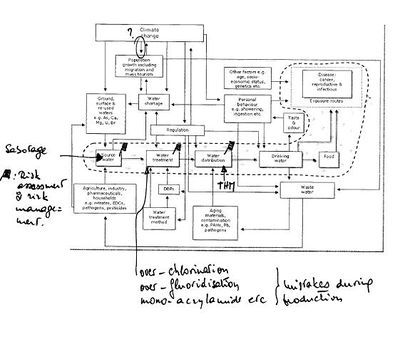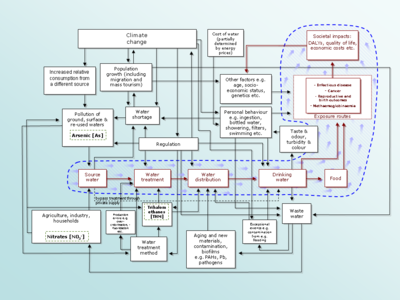Engaging IEHIAS stakeholders: example from water
- The text on this page is taken from an equivalent page of the IEHIAS-project.
As part of the EU-funded INTARESE project, which contributed to the development of this Toolbox, a case study was carried out to assess health impacts associated with domestic water supply.
Contents
Involvement
Stakeholders were involved in the initial scoping of the water assessment. It was recognised from the start that
health impacts related to water were both variable and significant, so it was considered essential to obtain the assistance of a variety of stakeholders in framing the issues of greatest pertinence. Given limited resources and time constraints, the best means of doing this was to contact the individual stakeholders by email, to send them a very broad outline of what kind of assessment we were planning to carry out, to ask a set of five questions (see below), and then send a scoping diagram on which they were requested to comment. The various responses of the stakeholders and their comments on the diagram were pooled and synthesised into a summary report and draft causal diagram, which was simplified to capture the main themes, and this was once more distributed for final comments. This helped to ensure the clarity and relevance of the assessment and narrowed it down to manageable proportions.
Initial data requested
The data requested for each stakeholder included:
- Stakeholder type
- Name of organisation (and web address)
- Role/institutional aims and objectives
- Assumed aspects/issues of interest to the stakeholder
- Anticipated position(s) of the stakeholder on these aspects/issues
- Contact details (name and email)
Questions asked
- Does the framework provide a useable, realistic representation of the current situation? Please comment.
- Which aspects, if any, of the framework diagram are unclear to you?
- What, if anything, is missing from the framework diagram?
- Which aspects of the framework diagram would consider of highest priority to the assessment?
- Please add any additional comments or questions as you see fit.
Scoping diagram input
The stakeholders were initially sent a very preliminary version of the scoping diagram (see Figure 1), which they commented on and annotated as they saw fit.
One of the returned versions of the diagram is presented in Figure 2.
Following several rounds of integration of comments, and several iterations of streamlining, the scoping diagram was prepared as in Figure 3.




